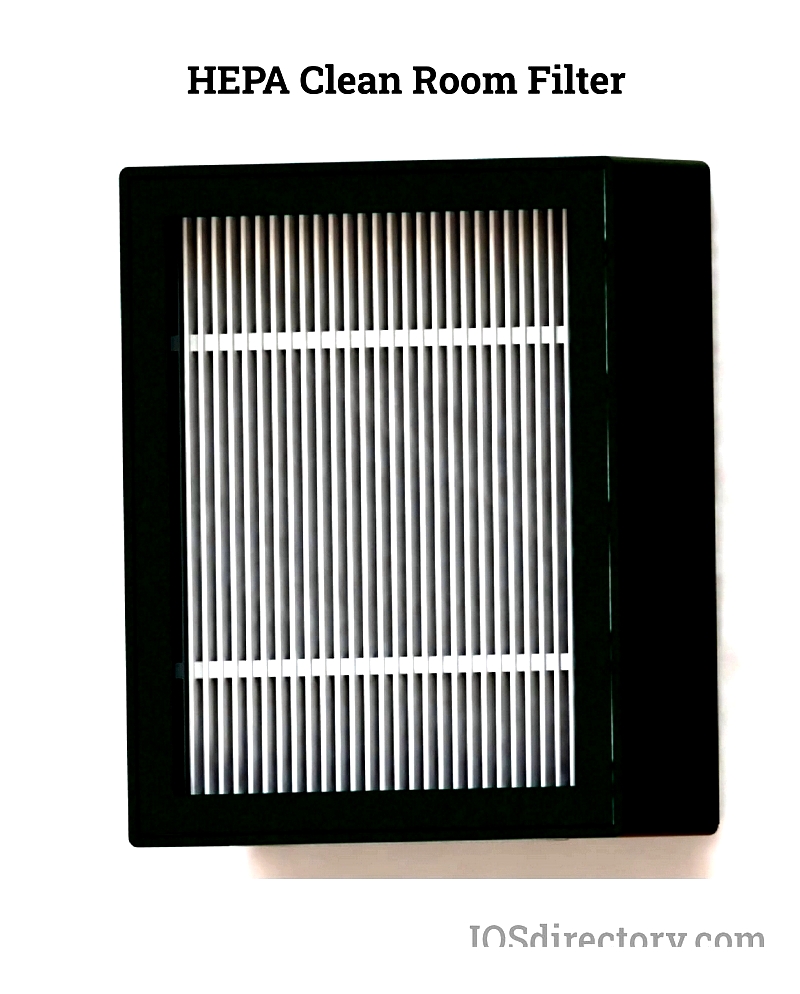Introduction
This article provides an in-depth examination of cleanroom types.
You will learn about:
- What is a Cleanroom?
- Cleanroom Requirements
- Cleanroom Applications
- Types of Cleanrooms
- Cleanroom Supplies
- Key Cleanroom Considerations

Understanding Cleanrooms
A cleanroom is a specially designed environment that removes dust particles and air pollutants. These controlled spaces are essential for scientific research, pharmaceutical production, and other industries where product quality depends on contamination-free conditions.
Cleanrooms are classified based on particulate matter (PM) concentration per cubic meter, including both solid and liquid particles. Normal air contains about 35 million particles per cubic meter, with most measuring around 0.5 micrometers (μm).
The International Organization for Standardization (ISO) classifies cleanrooms from ISO 1 (highest cleanliness) to ISO 9 (lowest cleanliness), based on particle size and concentration.
Previously, the U.S. used Federal Standard 209E for cleanroom classification, established by the Institute of Environmental Sciences and Technology (IEST) in 1963. This system ranged from Class 1 (equivalent to ISO 3) to Class 100,000 (similar to ISO 8). Although some regions still use this standard, it was officially discontinued in 2001.
Before modern solutions, creating contamination-free spaces was challenging due to uncontrolled airflow and particles. In 1960, physicist Willis Whitfield revolutionized the field with an advanced filtration system that became the foundation for today's cleanrooms.
Cleanroom Specifications and Design
Cleanrooms serve critical roles in pharmaceuticals, biotechnology, semiconductors, laboratories, microchip production, and photovoltaics. They provide precise environmental control for sensitive manufacturing processes, with standards determined by product requirements.
Personnel protection is paramount in cleanrooms. Workers wear specialized single-use protective gear made from durable synthetic materials. All items entering must meet strict approval standards to ensure complete contamination control.
Cleanrooms feature minimalist designs without traditional furniture. Surfaces are smooth and joint-free to prevent dust accumulation, using materials like polished stainless steel or plastic. This design significantly reduces contamination risks.
Lighting systems provide adequate visibility while meeting hygiene standards. They're designed for durability and minimal maintenance, as frequent cleaning may require recertification.
Airflow management is the most critical cleanroom component. Systems typically use unidirectional flow, with air entering through the ceiling and exiting through the floor. Negative pressure prevents contamination spread while keeping external pollutants out. System design depends on the materials processed.
Cleanroom construction and operation costs average $100-$150 per square foot. A 10x10-foot cleanroom (about bedroom-sized) costs $10,000-$15,000, depending on air control systems and instrumentation.

Modular cleanrooms offer a flexible, cost-effective alternative. They provide equivalent contamination control to permanent installations while allowing easy reconfiguration. Their adaptability makes them an excellent choice for various applications.
Cleanroom Applications
During the 2020 COVID-19 pandemic, cleanrooms proved vital for medical treatment, research, and drug development. Since their 1960s inception, these controlled environments have served electronics, aerospace, biotechnology, and nanotechnology industries where strict contamination control is essential. Below are key cleanroom applications across multiple sectors.
Hospital Isolation Rooms
Hospital isolation rooms are specialized cleanrooms for infection control and patient safety. They separate infectious or immunocompromised patients from other areas, with classifications (typically ISO 7 or ISO 8) matching their sterility requirements. These rooms contain contagious patients or protect vulnerable individuals from hospital-acquired infections.
Isolation rooms use adjustable air pressure systems. Negative pressure rooms contain contagious diseases, with HEPA-filtered air being safely exhausted. Positive pressure rooms protect immunocompromised patients by preventing contaminant entry. Both designs rely on HEPA filters that remove particles as small as 0.3 µm.
Modern hospital cleanrooms combine clinical expertise with advanced design, featuring environmental monitoring, pressure alarms, touchless sanitation, and dedicated air systems. These features help meet CDC, USP, and WHO infection control standards.
Semiconductor and Microelectronics
Cleanrooms are indispensable for semiconductor and microelectronics manufacturing, where even microscopic contaminants can cause defects. These facilities require strict control of particles, temperature, humidity, and electrostatic discharge, typically meeting ISO 3-5 standards.
Semiconductor cleanrooms address every contamination risk through specialized materials, antistatic workstations, optimized airflow, and dust-free storage. Support areas like gowning rooms and airlocks maintain cleanliness standards. Regular monitoring and certification ensure continuous compliance.
These facilities constantly evolve to incorporate new technologies like cleanroom robotics and modular construction, ensuring high-quality microchip production.
Medical Device Manufacturing
Medical device production occurs in GMP cleanrooms to ensure safety and regulatory compliance. These ISO 7-8 classified facilities (or ISO 5 for implantables) require precision cleaning and real-time contamination monitoring throughout manufacturing processes.
Subject to FDA inspections and ISO 13485 standards, these cleanrooms feature specialized layouts, gowning procedures, and HEPA filtration. Advancements in automation and monitoring have significantly improved device reliability and sterility assurance.
Compounding Pharmacies
Pharmaceutical cleanrooms comply with FDA cGMP and USP standards for sterile compounding. These ISO 7-8 environments control all environmental factors while providing HEPA-filtered air for sensitive drug preparations.
Compounding pharmacies invest in validated designs, advanced HVAC systems, and contamination-minimizing equipment to meet USP 797/800 requirements. Modular construction allows quick certification and operational flexibility.
Ballroom Cleanrooms
Ballroom cleanrooms offer large, flexible spaces for multiple production lines or processes. These ISO 6-7 classified facilities feature adaptable layouts with robust air management and contamination control systems.
Maintaining standards across large areas requires integrated monitoring and strict protocols. These cleanrooms serve precision manufacturing, biotech, and aerospace applications where reconfigurable space is valuable.




